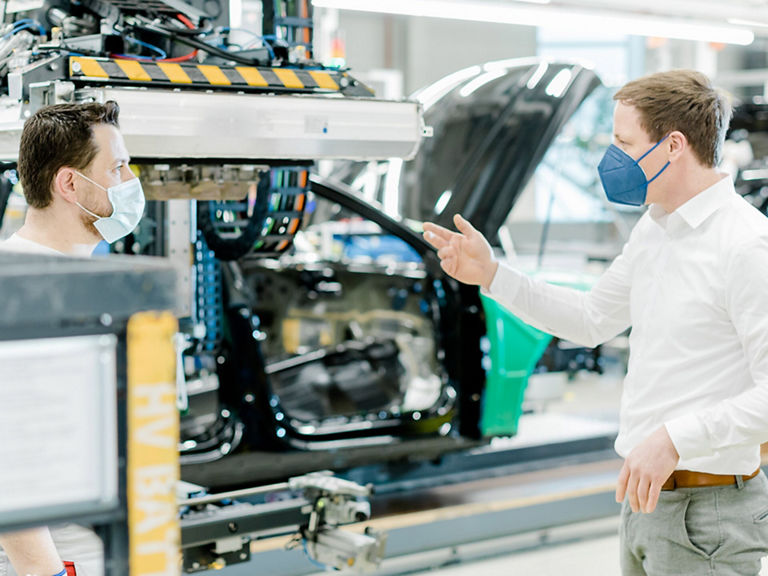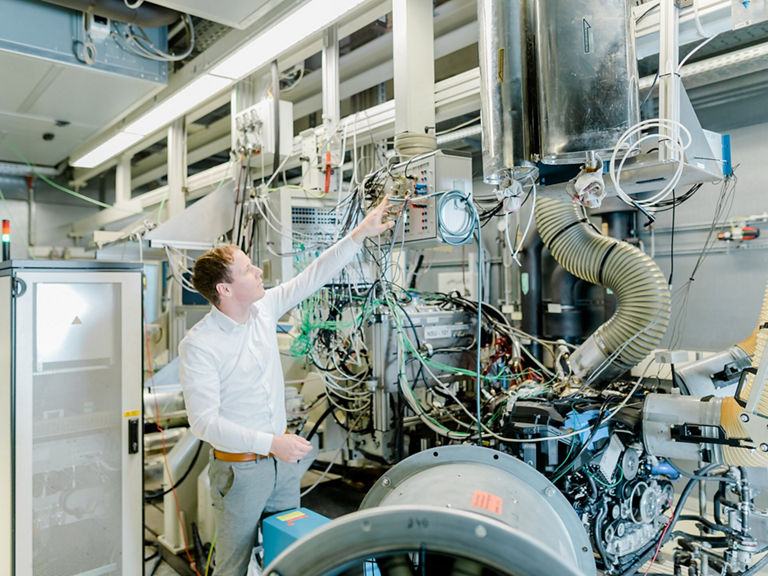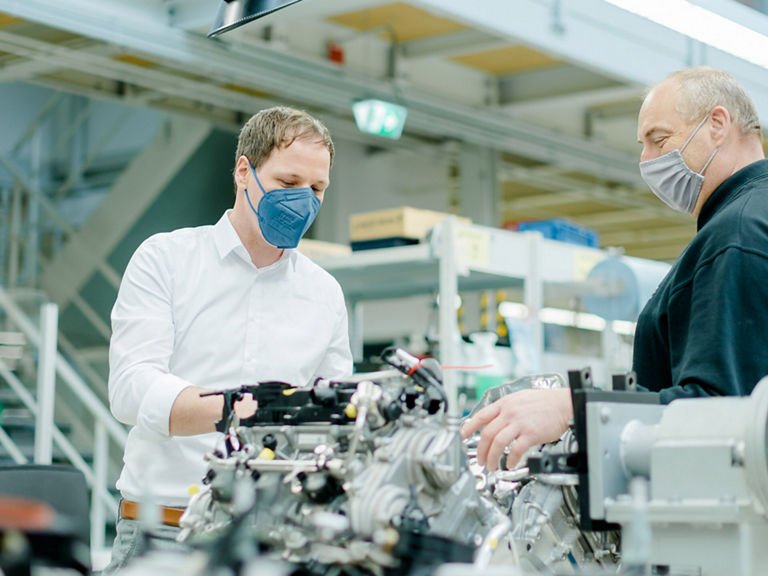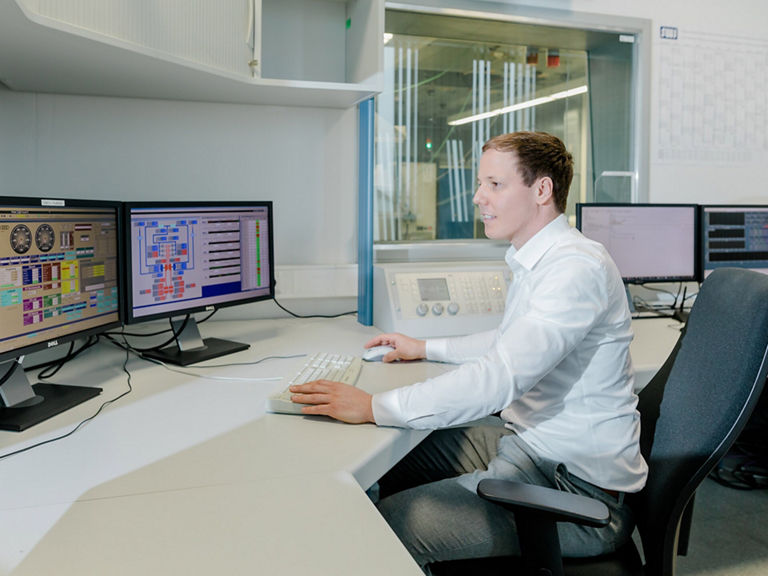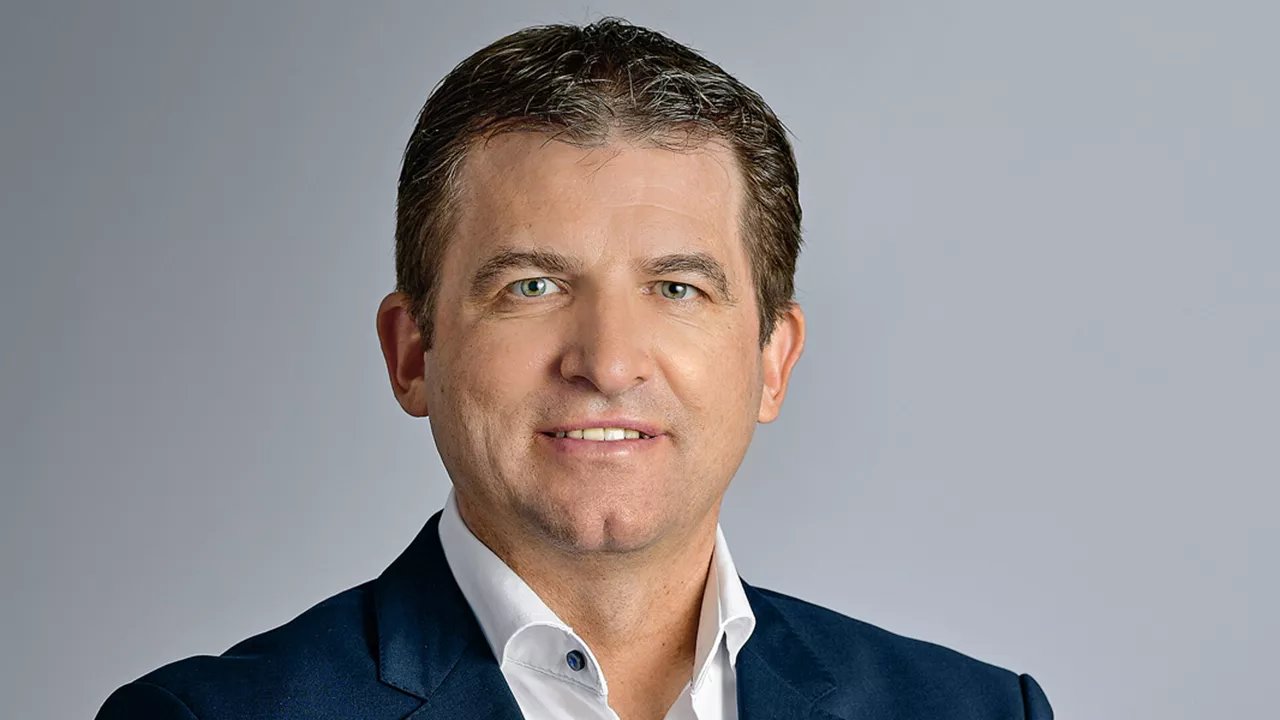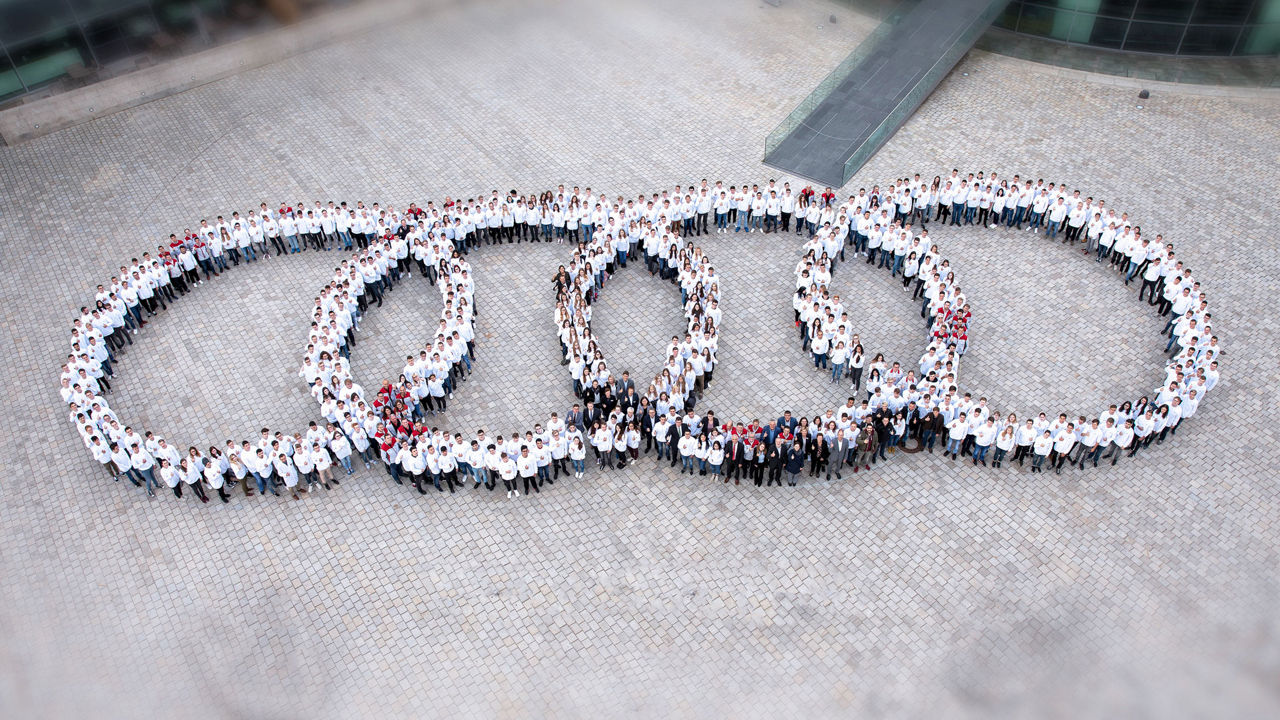Goals: What do we want to achieve?
“The fact that the future is electric,” says Zimmermann, “has been obvious for some time.” He already wrote about the thermal management of batteries back at university in his thesis. Nowadays, nearly all manufacturers are pursuing the strategy that cars should merely purr gently in the future rather than roar loudly. From 2026, Audi will only introduce new models with electric drive onto the market – in line with the corporate strategy “Vorsprung 2030”.
Even more important than electric, however, is connectivity, the “software readiness” of all elements. “The car of the future is becoming a mobile device,” says Michel, driven by a revolution in user behavior: What was once a quick and convenient means of getting from A to B is soon to be transformed into an office or movie theater or shopping mall. All the more so with the advent of automated driving. In the future, when customers can relinquish the actual task of driving at times, it will be the design and features of the interior that serve as the main selling points.
Designed from the inside out
Technical Development is prepared for this: Instead of first designing the exterior, cars in the future will be conceived from the inside out. The interior is set to become a living environment for customers, thus dominating the entire design process. Take lighting, for example: “We are moving away from pure displays and toward communication,” explains Dietmar Scherer, Head of Strategy in Technical Development.
To keep abreast of the customer’s needs and of technological advances, Technical Development is focusing its work on a new guiding principle: continuous development rather than cyclical thinking. Instead of working toward individual milestones such as the start of production, the division acts like a tech company: The development of a model is never completed. Instead, it is continually improved and kept up to date – with software updates, for example. All with the high quality and safety standards of the Audi brand.
Matrix structure instead of functional silos
Another core principle is systems engineering. Whereas engineers formerly thought primarily in terms of parts, vehicles are now broken down into systems that are geared to the relevant software solutions. For example, while turn signals were once developed as a separate part, they now belong to the parking system, in which an abundance of functions such as sensors, steering and the turn signals must interact with each other. “Anyone who has not understood and internalized systems engineering will have trouble in our industry in the coming years. Whether you work in Technical Development or any other division of the company – systems engineering concerns everyone,” explains Jan Michel.




